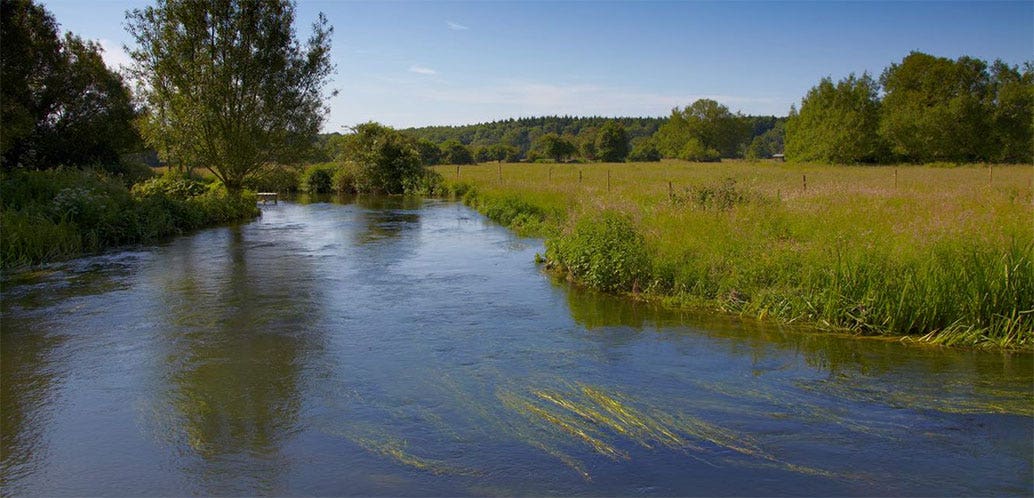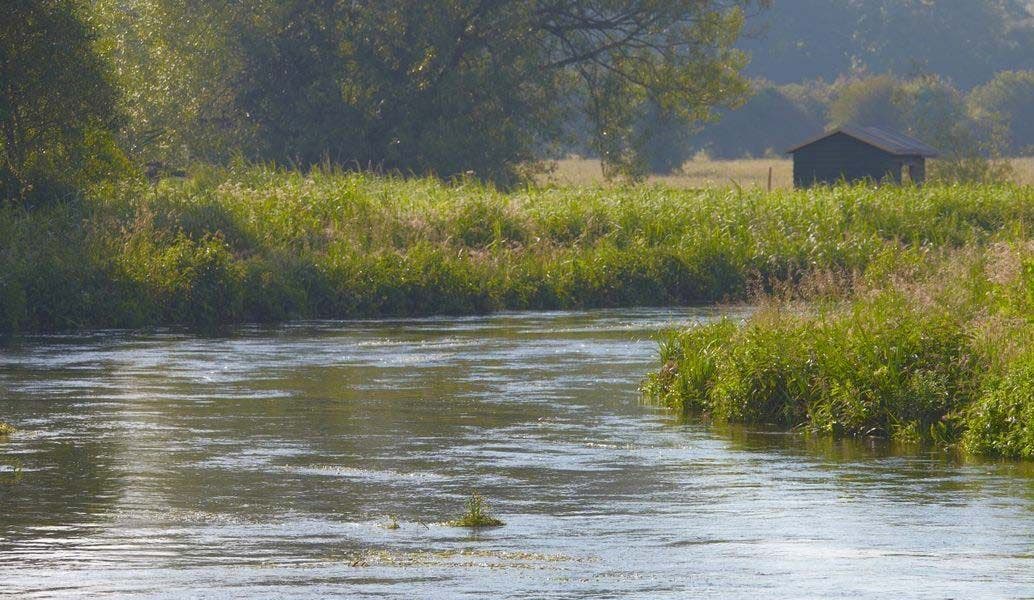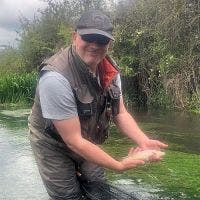Simon Tilbury, Group Head of Marketing for Sportfish and Farlows, grew up very near the River Kennet and is passionate about protecting our rivers, especially chalkstreams. Here he outlines why chalkstreams are so important, how they are under threat and what we can do about it.
CHALKSTREAMS - ENGLAND’S RAINFORESTS
David Attenborough described chalkstreams as “one of the rarest habitats on Earth” in his recent BBC series Wild Isles.
85% of them are found in England, a reflection of the nation’s geology and its temperate climate. Chalkstreams occur only where chalk bedrock meets the earth’s surface, making them globally scarce (of the 260 true chalkstreams on earth, 224 of them run through the English countryside, with France accounting for most others).
Their stable, cool, nutrient-rich waters allow them to support an exceptionally high number of species – so much so that these habitats are sometimes described as “England’s rainforests” and represent an important contribution to global biodiversity.
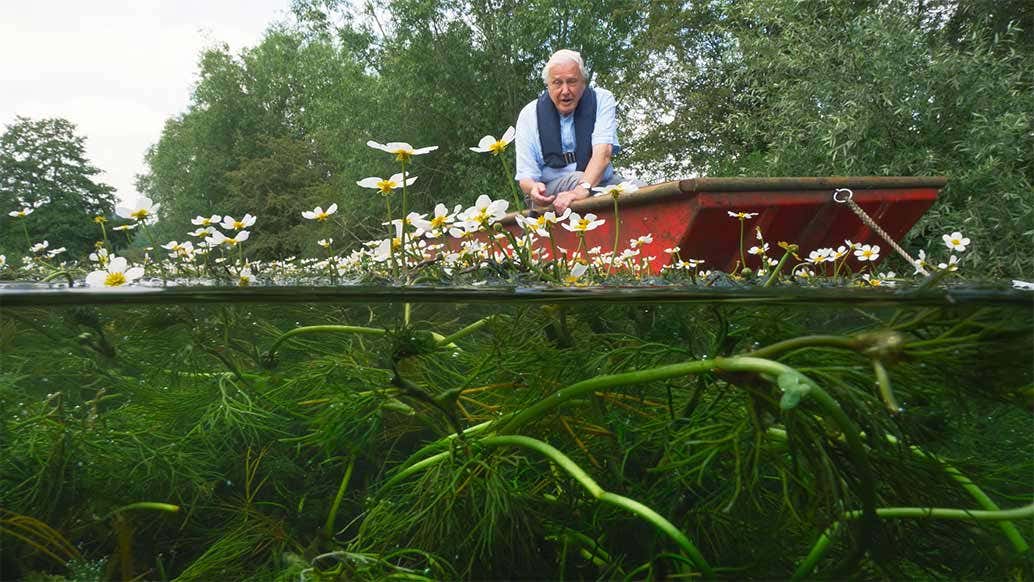

The water you see in a chalkstream is mostly from rain that fell 6 months ago. Rainwater drains deep into the chalk landscape and forms underground aquifers. Filtered by the chalk, the groundwater then springs forth at a constant temperature with a consistent flow, creating gin-clear nutrient-rich streams. These support photosynthetic plants and microorganisms – the fuel for food webs that feed everything from grazing insects to predatory fish and mammals.
This unique geology creates an unique ecosystem, where plants and animals prosper more so than any other type of river. Aquatic plants such as Flag Iris and Water Crowfoot thrive in chalkstreams, as does the fly life trout depend on to survive. Otters, kingfishers and water voles make their homes there, alongside the trout, grayling, Atlantic salmon and thousands of other aquatic creatures. They are the embodiment of the tranquillity of the English countryside.
Chalkstreams not only help to make the British landscape so picturesque, in addition to the wildlife they support, for hundreds of years they’ve also been a vital source of fresh water for people, industry and farming. Ironically these are the very things that have been destroying chalkstreams for decades.


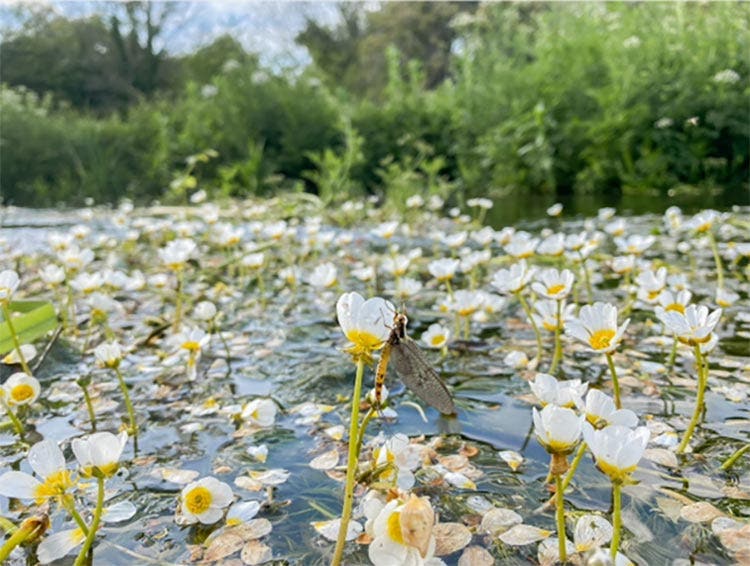

WATER QUANTITY
Rapid human population growth and an increase in domestic appliances using water (showers, washing machines, dishwashers etc.) have led to a 70% rise in household water usage since 1985. With no new public water supply reservoirs built in the UK for over 40 years, this has led to soaring rates of unregulated water abstraction from the chalk streams by our privately owned water companies. Which in turn has led to many chalkstreams drying out in hotter months, killing off the wildlife.
In the summer of 2019 more than two thirds of chalkstreams in the Chilterns dried out. Coupled with the impact of global warming and more frequent heatwaves, it’s a potent mix threatening water quantity in chalkstreams, and thus everything living in it and from it.
According to The Rivers Trust:
“unfortunately, predictions indicate that our water supply is likely to become even more unreliable. The general trend we are expecting to see in the UK is hotter drier summers alongside more intense rainfall and flooding. In general, our rainfall will be more volatile and extreme. By 2040, we expect more than half of our summers to exceed 2003 temperatures. By 2050, the amount of water available could be reduced by 10-15%, with some rivers seeing 50%-80% less water during the summer months. At the same time, our total demand for water is predicted to increase. The population of the UK is expected to rise from 67 million to 75 million by 2050. All those extra people need houses, roads, energy, food and places to work, all of which will require more water. So, water availability is expected to reduce while demand is expected to increase over the next 30 years. If you plot predicted water availability with predicted water demand in England you get a graph, like the one shown below, that is colloquially called the jaws of death. If we don't act, water demand could exceed supply by around 2035.”
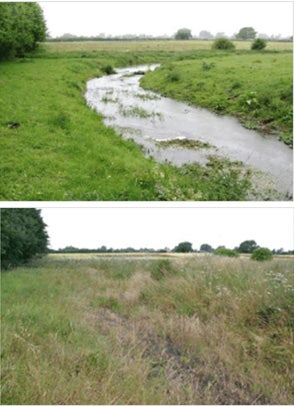



WATER QUALITY: PROBLEM #1 - SEWAGE
The bigger problem however is water quality. The same water companies are also responsible for untreated sewage being pumped into our rivers. Most of the UK has a combined sewerage system, meaning that both rainwater and wastewater (from toilets, bathrooms and kitchens) are carried in the same pipes. Usually, all the waste is carried to sewage treatment works. But the Environment Agency (EA), which covers England, says capacity can sometimes be exceeded during heavy rainfall, leading to inundation of sewage works and potential flooding of homes, roads and open spaces. For this reason, the system is allowed to overflow occasionally and discharge excess wastewater into the sea and rivers. This practice is known as combined sewer overflows (CSOs) and is legally permitted.
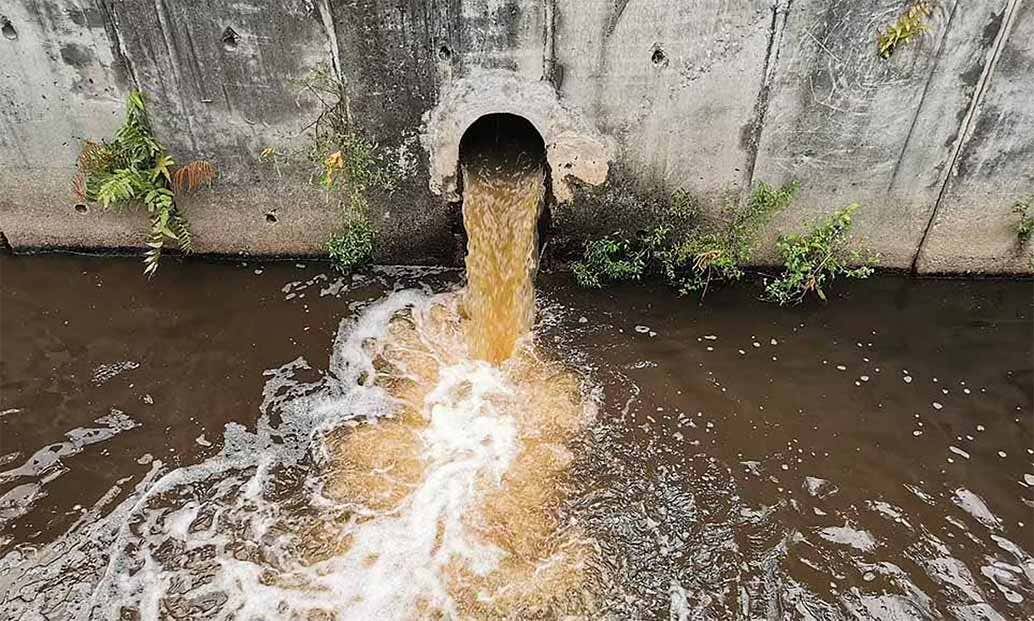

The problem is that the water companies have been discharging sewage when they don’t have to for years, because it saves them money and because they can get away with it since they are not properly regulated. In 2022 there were over 389,000 discharges of untreated sewage into UK rivers, totalling over 2.4 million hours of pollution. As private companies they are more interested in making money for their shareholders than properly investing in updating our antiquated Victorian sewer systems (they paid out £1.4 billion in dividends in 2022).
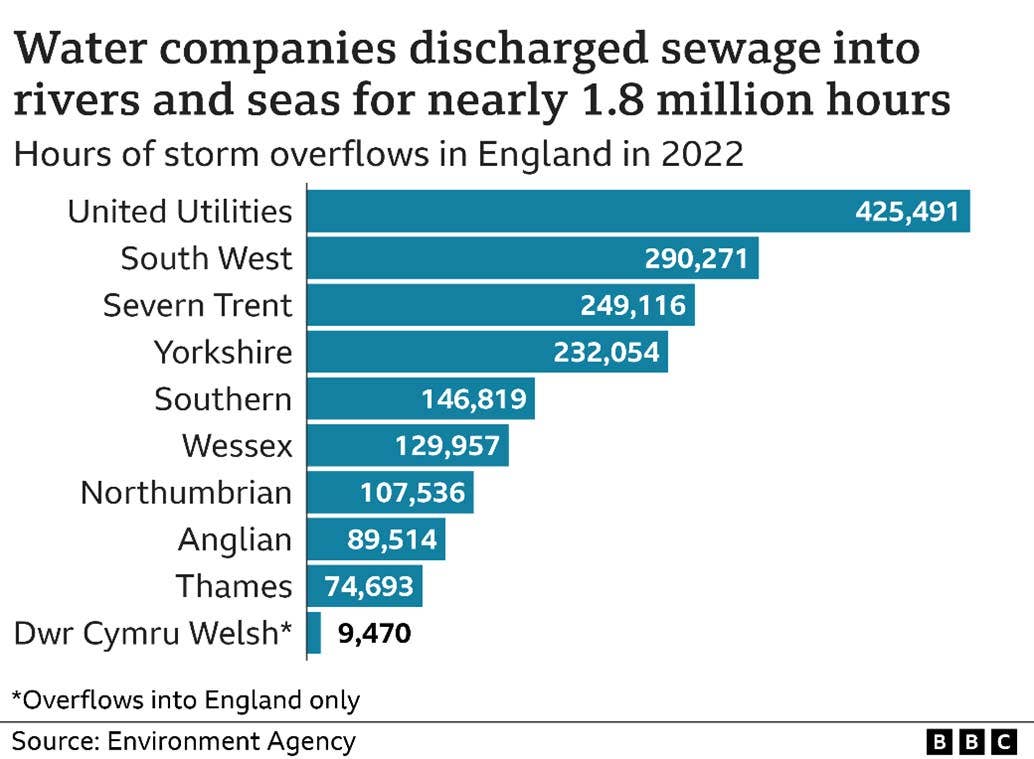

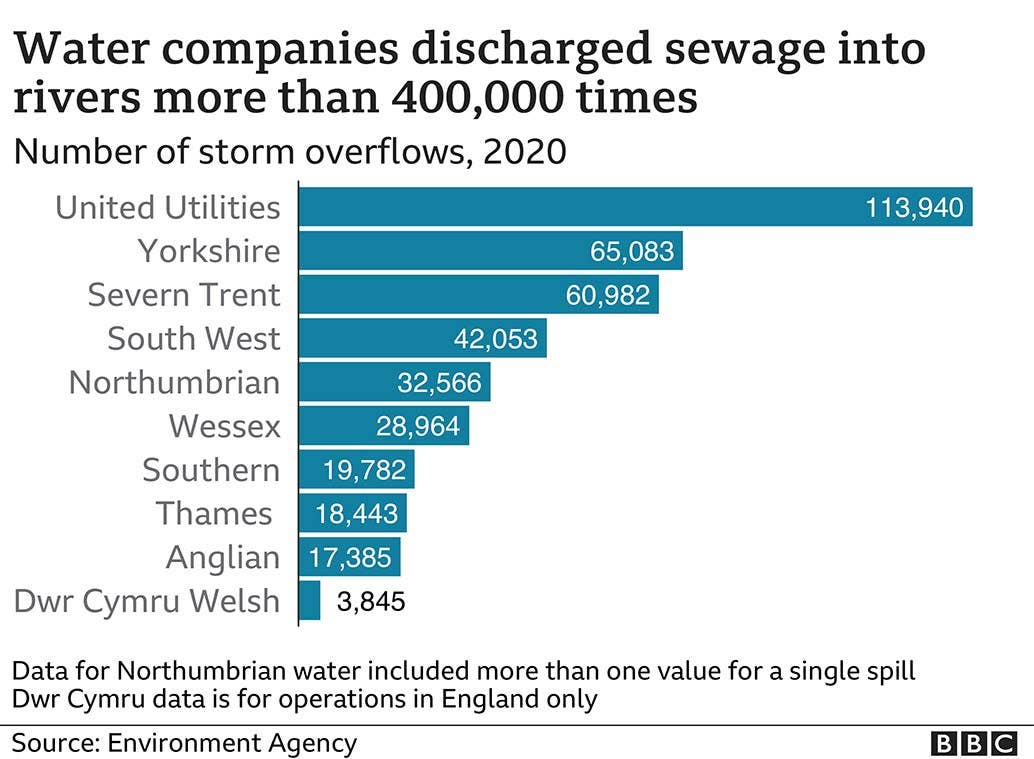

According to The Rivers Trust in 2021 only 14% of the UK’s rivers were considered to be in good ecological health, and every single one of them failed required chemical standards. Excess sewage in rivers leads to increased algae in the water, reducing the amount of oxygen, making it difficult for fish and plants to survive. According to WWF, global freshwater vertebrate populations have declined 83% since 1970.
Thanks to tireless environmental campaigners and organisations, including Feargal Sharkey and Paul Whitehouse (who highlighted this in his recent BBC series “Our Troubled Waters”), the general public is more aware today of what’s actually been going on and the government is being forced to act (or appear to act). Better late than never (although for some rivers it’s nearly too late as they’re not far from being declared “biologically dead”).
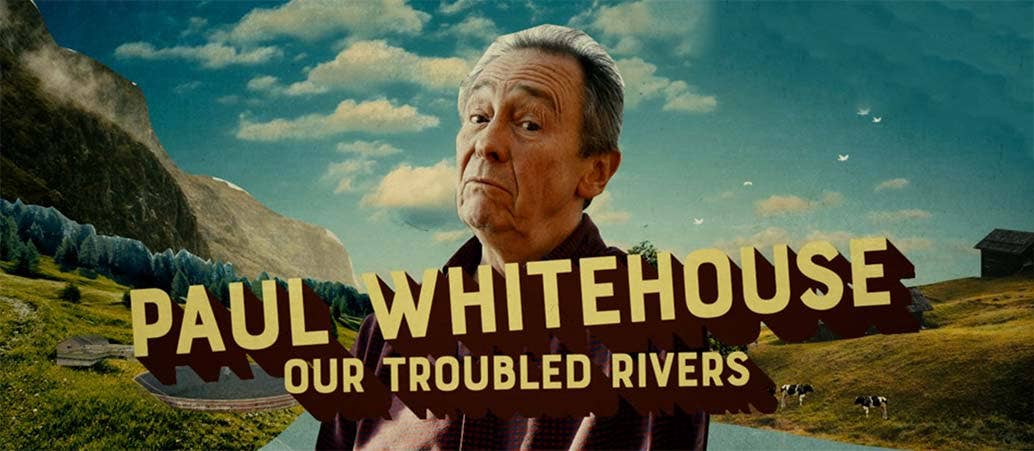

WATER QUALITY: PROBLEM #2 – FACTORY FARMING
Illegal sewage dumping is only part of the pollution problem, however. The other edge of this toxic sword of death is factory farming, often carried out by large multinational agribusinesses. England’s cherished waterways are awash with animal faeces, microplastics and chemicals according to the findings of a recent report by the Environmental Audit Committee - and intensive chicken and livestock farming is one of the leading causes. Slurry and run-off from livestock and poultry farms, in particular, is adding faecal matter and pathogens, microplastics, phosphorus, nitrates, and substances such as veterinary medicines to the “chemical cocktail” entering even England’s most pristine rivers, the report said.
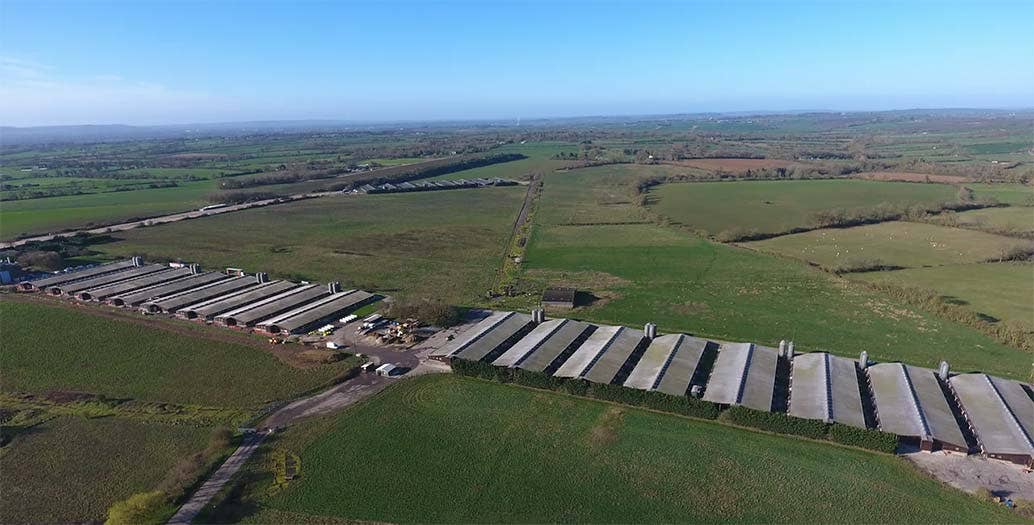

The river Wye (which isn’t a chalkstream but does run past the Sportfish shop in Winforton) is a prime example of this. Once famed for its rich diversity of plants and fish, intensive chicken farms have turned the river into an ecologically barren sickly green sewer, often likened to “pea-soup”. Recently, a new ingredient was discovered in this potent broth – antibiotic resistant superbug pollution was recorded downstream from factory farms based in the Wye valley. Big companies are profiting, while Britain’s wildlife suffers. Of the 20 million chickens that are fattened along the Wye, 16 million are owned by Avara foods. Avara posted £23 million in profits in 2020/21, while merrily polluting one of the most ecologically important and diverse rivers in the UK. Despite these threats to people and planet, planning permission for new factory farms is still being granted across the UK.
Even smaller farms can play a part, discharging quantities of agrochemicals, organic matter, veterinary drug residues, sediments and saline draining into our rivers unchecked through run off. The same report by the Environmental Audit Committee found that intensive arable farming was also a contributing to the problem in many parts of the country. Both fertilisers and animal manure from livestock farming introduce excess levels of phosphorous and nitrogen into soil and river sediment, resulting in algal blooms that lower river oxygen levels and which are devastating to local aquatic wildlife.
It’s important to note however that many farmers are starting to do really positive things in terms of sustainability and the environment, including helping to protect our rivers. You can find a few examples here:
- Farmers working to keep ‘globally rare’ chalk stream crystal clear - Game and Wildlife Conservation Trust (gwct.org.uk)
- Biodiversity recovery, clean water in the River Avon, and net zero farming by 2040 – new Environmental Farmers Group sets out its bold ambitions - Game and Wildlife Conservation Trust (gwct.org.uk)
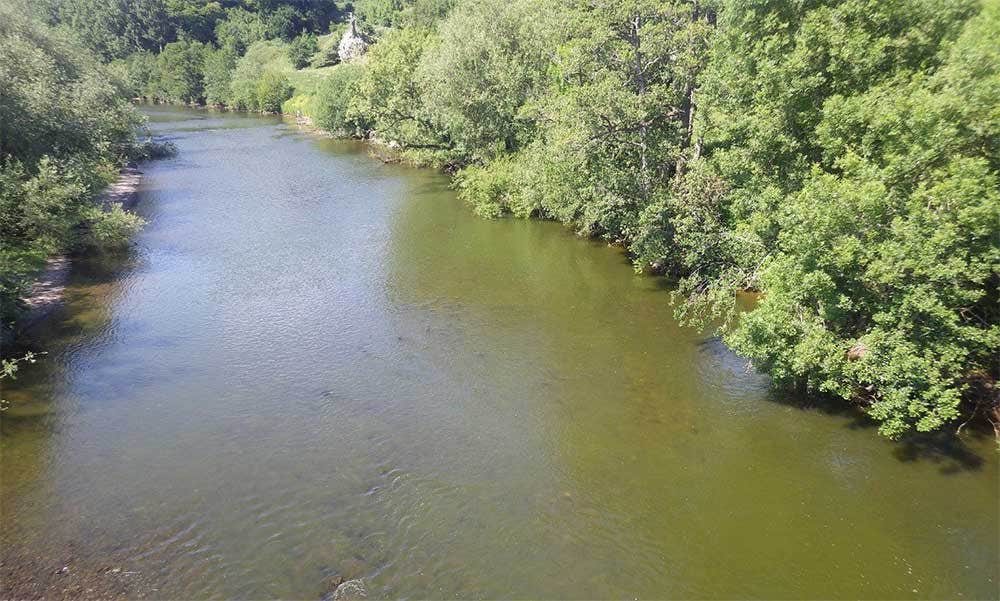



WATER QUALITY: PROBLEM #3 – ROAD RUN OFF
Run off from our roads is toxic too. When it rains on a road surface, the pollution is washed off into the drainage system. This often comprises a piped drainage system with a direct discharge to a local river or stream, with no pollution control devices at all. The road runoff contains a cocktail of pollutants from the vehicles that use the road. There are toxic metals, including copper and zinc, which come from brake and clutch components and tyres. There are large concentrations of suspended solids, made up of soils deposits, tyre particles, fragments of the road surface and more. And finally, there are toxic organic compounds including Poly Aromatic Hydrocarbons (PAHs) which come from exhaust emissions, unspent fuel and tyre residues.
The pollutants work in different ways to cause different types of pollution. The solids settle out of the runoff onto the riverbed.
The sediment coats the bed of the watercourse which has physical effects on spawning grounds for fish and habitats for invertebrates, suppressing the populations of species in the river. The sediment also contains toxic metals which affect the health and development of the fish & invertebrates, causing suppression of populations and failure to thrive.
Finally, the toxic organic compounds, including PAHs, have insidious, long-lasting polluting properties, building up in the flesh of fish & invertebrates, and slowly affecting the whole food-chain. PAHs are carcinogenic, mutagenic and affect the reproductive success of species, so the pollution affects the whole river ecosystem and can spread far downstream. However, PAHs are rarely measured in British rivers so the impact of road runoff on water quality is overlooked and under-reported.
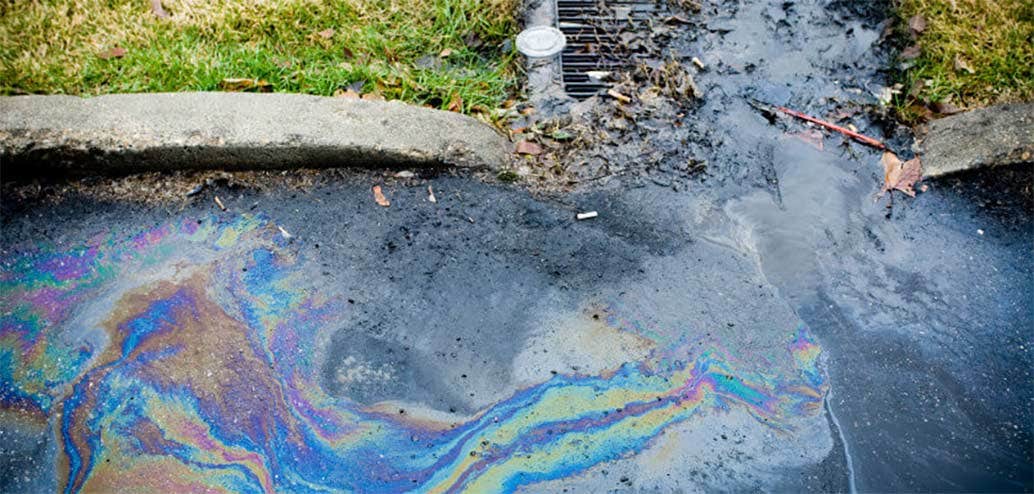

THE 3RD FACTOR – HABITAT
While water quantity and quality are the two biggest factors affecting the health of our rivers, there is a third. This is habitat complexity - the kind of structurally varied environment which makes rivers and streams into comfortable places for fish and other species to live, complete with lots of niches for different species, at all the various stages of their life cycles.
The basic principle is that if we create physical diversity in the river, all things being equal, ecological diversity will follow. So, making the banks and bed of the river varied in depth and width will create lots of places for lots of plants and animals to live. This is something that UK charity the Wild Trout Trust focuses on. Theo Pike, WTT’s Trout in the Town Officer, outlines the problem we’ve created:
“over the last few centuries most of Britain’s rivers have been unnaturally de-complicated: in other words, straightened, simplified, and pushed to the very edges of their floodplains to make more space and straighter lines for agriculture and development. Sometimes this was deliberate, such as in the case of pinning a river along a high-level leat so that its energy could be harnessed for milling or, latterly, hydropower. At other times, it was almost accidental, the result of moving the river off its natural floodplain, and then repeatedly dredging and embanking the channel to keep it there. Habitually removing fallen trees from the water can have a similar effect - robbing the river of the structure, energy and varied flow patterns that it needs for natural processes like scour and deposition - the forces that create diversity”.
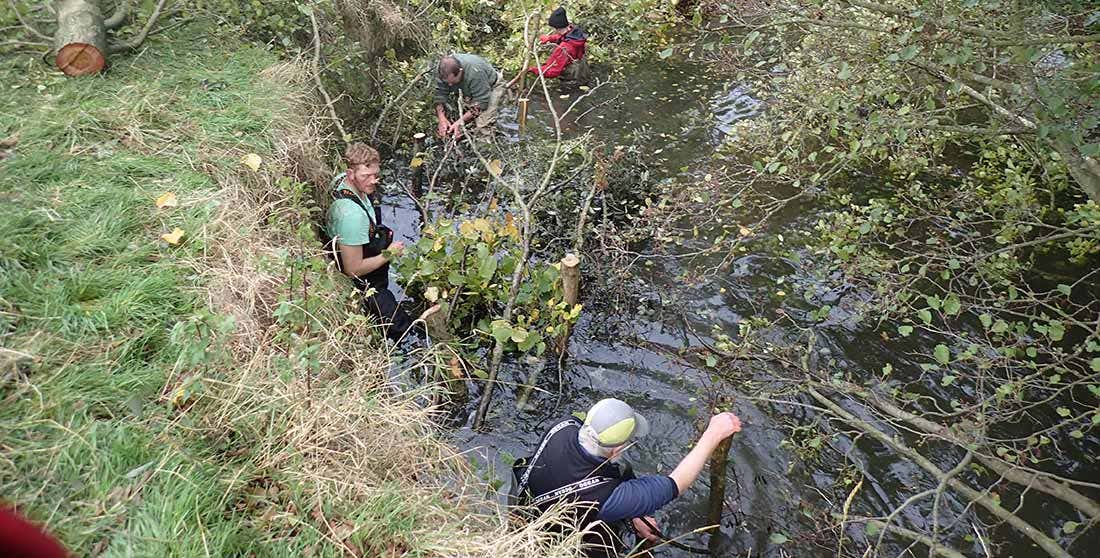

We need to ensure our river habitats are diverse enough to ensure that aquatic life can flourish. Physical diversity improves ecological richness. Making our rivers more resilient in the face of water quality and quantity challenges should be something we don’t neglect.
Although a relatively small conservation charity, WTT works with fishing clubs, landowners and other groups to put right the damage done by dredging, straightening, weirs and poor land management. They plant bankside trees, fence-off riverbanks, put wood and gravel in the river to create habitat, take down weirs and install fish passes so fish can move around freely to fulfil all the parts of their life cycle. They don’t campaign directly in the media, but do support and provide evidence for those groups that fight hard for improved water quality and reduced abstraction. WTT also gives (usually free) advice, followed by a report, to anyone with an interest in a particular stretch of river.
You can find out more at:
You can read some previous Sportfish WTT articles here:
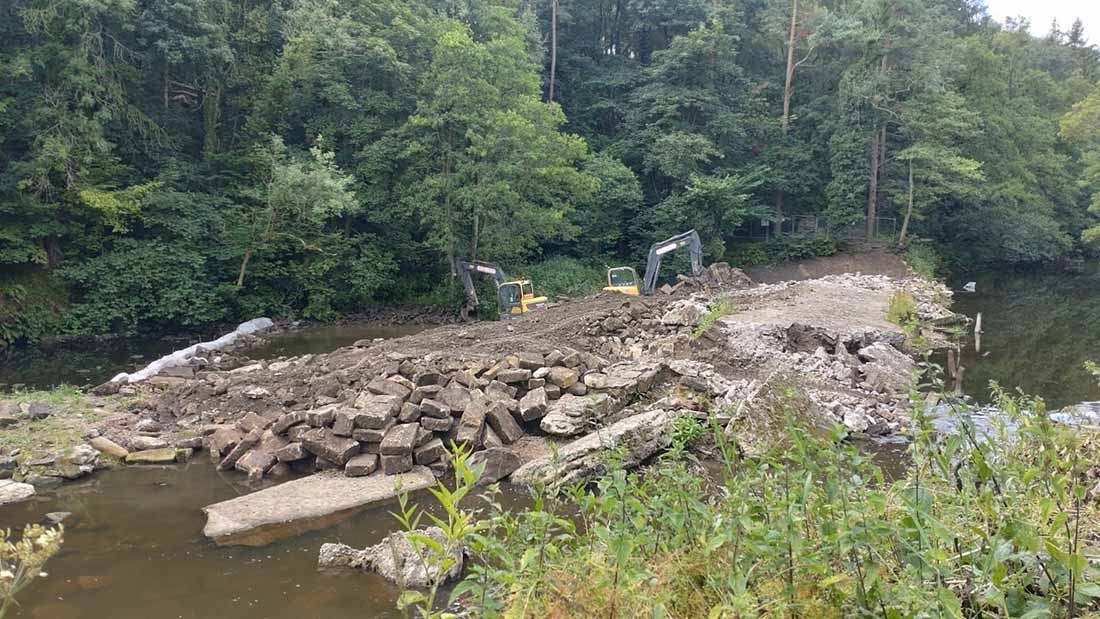

WHAT SPORTFISH IS DOING ABOUT IT
As the UK’s leading game fishing brand (by those who fish, for those who fish), we care passionately for our rivers, and part of our mission is to preserve them for future generations. It is why we financially support and promote charities such as the Wild Trout Trust, the Atlantic Salmon Trust and the Angling Trust (especially their Anglers Against Pollution Campaign, a video for which featuring TV actor Jim Murray we premiered at our recent Sportfish Spring Spectacular event in April:
Our other Sportfish shop is located in Theale, Berkshire, through which flows the River Kennet, one of England’s “big three” chalkstreams. The River Kennet is listed as a ‘Site of Special Scientific Interest’, due to the river having the highest average number of species per site, thanks to its rich and diverse flora. Supporting the conservation of the River Kennet is hugely important to Sportfish and the surrounding angling community and, as such, they’ve made it their responsibility to help maintain the health of the river through advocating the following action points:
- Reduce abstractions surrounding the river
- Decrease pollution
- Revive natural river processes and improve habit
- Promote better river management including weed cutting, metering, rainwater harvesting and grey water harvesting
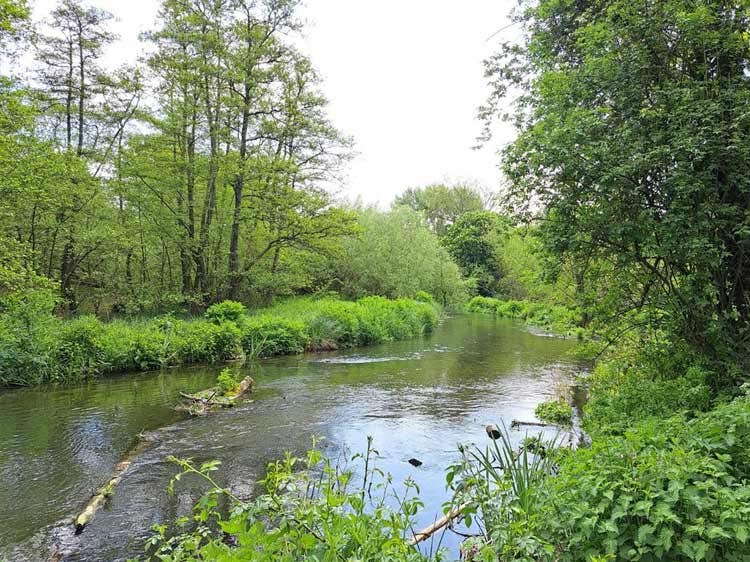

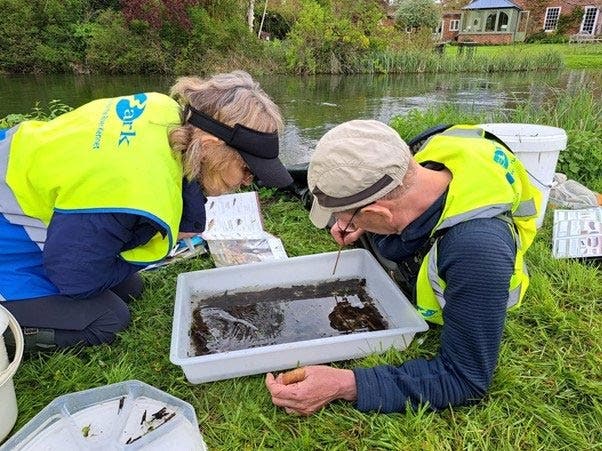

Sportfish also supports Action for The River Kennet, a group of people dedicated to protecting the river, with a strong growing army of volunteers. The campaign team monitors the health of the river and works alongside project officers to analyse action points to improve and restore habitats.
Since setting up the campaign, Action for The River Kennet has reduced abstraction and export of the water to Swindon, planted trees, plants and bulbs to boost habitats for wildlife, and attended UN Climate Conferences. Supporting the conservation of the river Kennet is only the beginning for Sportfish.
We’re keen to inspire every generation to not only develop a love for game fishing, but also a passion for protecting the environment. By working with a range of charities, hosting talks, and sharing information on the importance of river conservation and restoration, Sportfish is proud to support the conservation of England’s rivers and to help drive the debate to improve them.
WHAT YOU CAN DO ABOUT IT
You can and should play your part too. Tom Worthington, an aquatic ecologist from Cambridge University’s Department of Zoology says “most people don't get to see what's going on underneath the surface, and that’s a challenge.” Catherine Sayer, freshwater biodiversity lead for the International Union for Conservation of Nature adds: “Public interest in conservation has tended to focus on big, cute and fluffy charismatic species, on birds and mammals. Freshwater species also suffer from ‘out of sight, out of mind’. But the data makes clear that freshwater species are declining faster than those in the terrestrial and marine realms, so they urgently need our help”. The two biggest things you can do to help are:
- Reduce your daily water usage (take shorter showers, fix leaks, don’t let water run when brushing your teeth, only run your dishwasher when full, air dry your clothes when you can rather than tumble dry)
- Raise awareness of the issues our chalkstreams and rivers face and what’s causing them, and demand change. Decimation of rainforests is visible, but the damage to our rivers goes unseen beneath their surfaces. Sign petitions, talk to friends, shout so loudly that our government introduces appropriate regulations and penalties to make a difference before it’s too late
If you happen to live near a chalkstream, the chances are there will be some sort of local community group to help protect it. Search online, join them and get stuck in. This blog has focused on chalkstreams, but every river in the UK faces the same problems. Find your local river group, do something to be proud of, make some noise and drive change.
I started with a quote from David Attenborough and I’ll finish with one too:
“The truth is, every one of us, no matter who we are or where we live, can and must play a part in restoring nature. It’s easy to feel overwhelmed or powerless by the scale of the issues facing our planet, but we have the solutions. I am hopeful for the future, because although nature is in crisis, now is the time for action, and together we can save it.”
